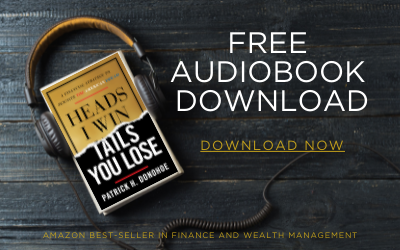For many retirees, the home holds both personal meaning and untapped financial value. A reverse mortgage offers a way to access that equity, without selling or taking on monthly loan payments. But this isn’t just about cash flow.
We see the reverse mortgage as part of a Wealth Shift, a strategic way to reposition home equity into tools that support liquidity, protection, and legacy. When used intentionally, it becomes more than a financial product, it becomes part of your bigger plan.
What Is a Reverse Mortgage and How Does It Work?

A reverse mortgage is a financial tool that allows homeowners to convert part of their home’s equity into tax-free cash, without having to sell the home or make monthly loan payments.
Instead of you paying the lender, the lender pays you, either as a lump sum, monthly income, or line of credit. The loan is typically repaid only when the borrower moves, sells the home, or passes away.
Key Features of a Reverse Mortgage (Typically HECM):
1. Flexible Payout Options
You can choose how to receive the funds based on your needs and planning goals:
- lump sum: access a portion of your equity all at once—ideal for large expenses or strategic funding
- monthly payments: receive steady, scheduled income for a set term or life of the loan
- line of credit: draw funds as needed, this option grows over time and can act as a long-term liquidity buffer
2. Retain Ownership and Control
- You remain the full owner of your home
- You can live in your home as long as you like
- The lender has a lien, not ownership—you’re not giving up your house
3. Responsibilities as a Borrower
You are still required to:
- Pay property taxes, homeowner’s insurance, and maintain the property
- Live in the home as your primary residence
Failure to meet these obligations can result in default, which is why strategic planning and coaching are key.
4. Deferred Repayment
- Unlike traditional loans, you are not required to make monthly mortgage payments
- The loan becomes due when:
- The last borrower passes away
- You move out permanently
- You sell the home
Repayment typically comes from the sale of the home or refinancing by heirs.
What Makes It Different from a Traditional Loan?
- No monthly payments required
- Approval is based primarily on your home equity and age—not your income or credit score
- Offers a way to unlock equity without incurring additional monthly financial obligations
- Federally insured (for HECMs), adding a layer of protection and transparency
Where the Wealth Shift Comes In
At Paradigm Life, we believe a reverse mortgage becomes most powerful when used as part of a Wealth Shift strategy—not just to spend equity, but to reposition it into assets that are:
- Tax-advantaged
- Income-producing
- Liquidity-friendly
- Legacy-enhancing
This might include:
- Using funds to purchase a high cash value life insurance policy, creating a tax-free legacy
- Reallocating funds into an irrevocable trust for estate planning or asset protection
- Creating a volatility buffer to reduce the pressure on market-based retirement accounts
- Funding long-term care or estate equalization strategies for your heirs
When viewed through the lens of the Wealth Shift, a reverse mortgage becomes more than a tool, it becomes a turning point in your retirement plan.
The Wealth Shift Strategy: Reverse Mortgage with Purpose

Too often, a reverse mortgage is viewed as a last resort, a way to cover emergencies or make ends meet. But at Paradigm Life, we encourage a more intentional approach.
A Wealth Shift reframes the reverse mortgage as a strategic tool. not to spend your equity, but to reposition it into assets that support liquidity, control, and long-term legacy.
What Is a Wealth Shift?
A Wealth Shift is the process of strategically repositioning your assets from where they’re underperforming, illiquid, or vulnerable, to financial tools that offer greater control, protection, and long-term value.
For many retirees, wealth is locked up in static places, like the equity in their home, traditional retirement accounts, or taxable investment portfolios. While these assets may look good on paper, they don’t always provide the flexibility or security needed in the later stages of life.
A Wealth Shift is about moving that wealth with purpose. It’s not about spending down or liquidating, it’s about making your money work smarter by aligning it with your retirement lifestyle, legacy plans, and long-term financial goals.
A Strategic Wealth Shift Focuses On:
- tax-advantaged growth: redirect equity into tools like whole life insurance or trusts that can grow without annual tax drag
- flexible access to capital: maintain liquidity and control—without penalties or market exposure
- legacy protection: ensure assets are transferred according to your wishes, protected from probate, and potentially passed on tax-free
Examples of Strategic Wealth Shifts Using Reverse Mortgage Proceeds:
- Fund a specially structured life insurance policy to create long-term, tax-free legacy
- Establish a liquidity buffer that protects retirement accounts from early depletion
- Use the proceeds to fund a trust or support estate planning
- Pay for long-term care without disrupting income-producing assets
Why It Works for Retirees
- You stay in your home
- You retain ownership and control
- You unlock capital without liquidating other assets or increasing debt stress
- You align your equity with your retirement and legacy goals, not just immediate needs
Who Qualifies for a Reverse Mortgage?
Not everyone can, or should, get a reverse mortgage. That’s why it’s important to understand the key eligibility requirements and how they align with your overall financial goals.
Basic Reverse Mortgage Requirements (HECM):
- Age: Must be 62 or older (at least one homeowner)
- Homeownership: Must own the home outright or have a low remaining mortgage balance
- Primary Residence: The home must be your primary residence (not a rental or vacation home)
- Property Type: Must be a single-family home, FHA-approved condo, or certain multi-unit properties
- Financial Assessment: Must demonstrate ability to pay property taxes, insurance, and upkeep
- Mandatory Counseling: Completion of reverse mortgage counseling from a HUD-approved agency is required
What the Counseling Covers:
- how the loan works: understand the basics of a reverse mortgage, including the differences between lump sum, monthly income, and line of credit options, as well as how interest accrues and how the loan is repaid.
- available payout options: learn how funds can be disbursed and which payout structure might best suit your cash flow needs or wealth shift strategy.
- borrower responsibilities: you’ll be informed about your obligations as a homeowner—like maintaining the property, staying current on taxes and insurance, and continuing to live in the home.
- alternatives to a reverse mortgage: counselors will explore other options with you, such as downsizing, refinancing, or using other financial products. this ensures the decision is made from a place of confidence and not urgency.
- understanding risks and fees: you’ll receive an honest breakdown of the potential risks, including the reduction of equity for heirs, as well as a review of associated closing costs, mortgage insurance premiums, and how interest accumulates over time.
- safeguards and protections: the counseling also covers your rights as a borrower and the non-recourse feature of hecm loans, meaning you or your heirs will never owe more than the home is worth.
How to Prepare
Before applying, gather:
- proof of homeownership: deed or title document showing you own the home
- mortgage statement: required if there is an existing loan that may need to be paid off as part of the reverse mortgage
- income and expense records: to verify your ability to maintain ongoing housing costs (like taxes and insurance)
- government-issued id: such as a driver’s license or passport
- information on property taxes and insurance
includes your most recent tax bill and insurance policy
Benefits of a Reverse Mortgage in a Wealth Shift Strategy

When used with intention, a reverse mortgage can be more than a loan—it can become a powerful financial tool in your retirement strategy. Especially when positioned within a Wealth Shift, it can unlock flexibility and security without compromising your legacy. Here are the key benefits:
1. Stay in Your Home
- You don’t have to sell or move to access your equity
- Maintain comfort, independence, and continuity in retirement
2. No Monthly Loan Payments
- Unlike traditional loans, repayment is deferred
- You’re not obligated to make monthly mortgage payments
- This helps free up monthly cash flow
3. Access to Tax-Free Cash
- Funds received are generally not considered taxable income
- Can be used for any purpose—medical bills, retirement income, or repositioning wealth strategically
4. Flexible Payout Options
Choose how to receive your funds:
- Lump sum
- Monthly payments
- Line of credit that grows over time (a valuable liquidity buffer)
5. Use Equity Without Selling Assets
- Avoid drawing down retirement accounts or selling investments at a loss
- Helps protect your overall wealth strategy during market volatility
6. Fuel a Strategic Wealth Shift
- Use proceeds to fund cash value life insurance, trusts, or other tools that offer control and legacy planning
- This turns home equity into an active part of your financial plan—not just stored value
Reverse Mortgage vs Home Equity Loan: Key Differences
Both reverse mortgages and home equity loans provide access to the equity in your home, but the way they work, and how they fit into your financial strategy, can be very different. For retirees seeking liquidity with control, it’s essential to understand how each tool impacts cash flow, ownership, and legacy.
Home Equity Loan
- Functions as a second mortgage
- Provides a lump sum that must be repaid with monthly payments
- Requires income verification and strong credit
- Interest begins accruing immediately
- You must make monthly payments regardless of retirement income
Reverse Mortgage
- No monthly loan payments required
- Repayment occurs only when you move, sell the home, or pass away
- Based on age and equity, not income or credit alone
- Funds can be disbursed as a lump sum, monthly income, or line of credit
- Designed specifically for retirees seeking liquidity without cash flow strain
Which Aligns Better with a Wealth Shift?
- If you’re seeking control, access, and legacy—and want to remain in your home—
a reverse mortgage often provides more flexibility and fewer obligations - Home equity loans may suit short-term needs, but reverse mortgages can play a more strategic role in retirement income planning and estate preservation
Understanding Costs, Rates, and Payout Options

A reverse mortgage offers access to tax-free equity—but like any financial tool, it comes with costs and variables that should be clearly understood before moving forward. The good news? When used as part of a Wealth Shift strategy, these costs can be offset by the value and flexibility the loan provides.
Types of Reverse Mortgage Costs
- Origination Fee
- Charged by the lender to process your loan
Capped at $6,000 (per FHA guidelines for HECMs)
- Charged by the lender to process your loan
- Mortgage Insurance Premium (MIP)
- Required for HECM loans backed by the FHA
- Helps guarantee the loan and protects both lender and borrower
- 2% upfront, plus 0.5% annually of the outstanding balance
- Third-Party Closing Costs
- Includes appraisal, title insurance, notary, credit check, and recording fees
- Typically ranges from $1,500 to $3,000 depending on your location and home value
- Servicing Fees
- Some lenders may charge monthly fees to manage your loan
- Many newer loans now waive this fee or include it in the rate
Reverse Mortgage Interest Rates
- Fixed-Rate:
- Offers one-time lump sum payout
- Predictable, but less flexible
- Variable Rate:
- Typically tied to a financial index (like the LIBOR or SOFR)
- Allows for more flexible payout options (monthly, line of credit, or combo)
- Interest accrues over time and is added to the loan balance
Payout Options
Reverse mortgages are highly customizable. Choose one or combine several:
- Lump Sum: Receive a large upfront payment
- Monthly Payments: Get steady income over time
- Line of Credit: Access funds as needed—and it grows over time
- Modified Tenure/Term: Blend monthly income with a line of credit
Why This Matters in a Wealth Shift Strategy
- Costs should be weighed against the potential to protect other income streams, fund strategic assets, or support long-term planning
- The line of credit option, in particular, aligns well with volatility buffer strategies and tax-efficient income layering
How Reverse Mortgages Can Complement Other Retirement Tools
A reverse mortgage shouldn’t stand alone, it works best when integrated into a thoughtful, long-term plan. When used strategically, it can enhance other retirement vehicles by providing liquidity, reducing risk, and extending the life of your assets.
1. Pairing with Whole Life Insurance
- Use reverse mortgage proceeds to fund or supplement high cash value life insurance
- Enhances legacy planning and tax-deferred growth
- Insurance death benefit can later be used to pay off the loan and pass value to heirs
2. Coordinating with Investment Accounts
- Draw from reverse mortgage funds during market downturns to avoid selling investments at a loss
- Acts as a volatility buffer to protect the timing of withdrawals from IRAs or 401(k)s
- Helps manage sequence of returns risk
3. Supporting a Living Trust or Estate Plan
- Use funds to fully fund a trust, equalize inheritance, or cover expenses during probate
- Provides liquidity without needing to sell property or deplete retirement accounts
- Supports your broader Wealth Shift and legacy goals
4. Funding Long-Term Care or Family Support
- Helps pay for in-home care, caregiving support, or assisted living
- Can also be used to support adult children or grandchildren without disrupting retirement income
Why It Matters
- Most retirees want more than just access to money—they want freedom, flexibility, and family impact
- When used intentionally, a reverse mortgage can preserve other assets, increase peace of mind, and reinforce The Perpetual Wealth Strategy™
FAQs:
When is a reverse mortgage a good idea?
A reverse mortgage is a smart option when you:
- Need additional cash flow without monthly loan payments
- Want to stay in your home long-term
- Have significant home equity but limited income
- Are looking to support long-term care, retirement income, or legacy planning
It works best when paired with a strategic plan, not as a quick fix.
What is the downside to a reverse mortgage?
Potential drawbacks include:
- Reduced home equity available to heirs
- Responsibility to maintain home, pay taxes, and insurance
- Accruing interest increases loan balance over time
- Upfront fees and closing costs can be high
However, when integrated into a Wealth Shift strategy, many of these concerns can be offset by increased control and flexibility.
How do you pay back a reverse mortgage?
Repayment typically occurs:
- When you sell the home
- Move out permanently
- Or pass away
Heirs can repay the loan by selling the home, refinancing, or using other assets. You can also pay off the loan voluntarily without penalty at any time.
Are reverse mortgages safe?
Yes, especially HECMs, which are federally insured.
Protections include:
- Mandatory counseling
- Loan limits based on age and equity
- Non-recourse structure: You or your heirs will never owe more than the home’s value
Still, it’s important to work with a trusted advisor to ensure it aligns with your broader strategy.
Can you use a reverse mortgage to purchase a home?
Yes. The HECM for Purchase program allows you to buy a new primary residence using a reverse mortgage.
This is often used by retirees looking to downsize or relocate without taking on new monthly mortgage payments.
What percentage of home value can you get with a reverse mortgage?
It depends on:
- Your age (older borrowers qualify for more)
- The home’s appraised value
- Current interest rates
Generally, you can access between 40–60% of your home’s value, with more available the older you are.
Late-Stage Liquidity That Aligns With Your Legacy
Accessing the equity in your home doesn’t have to mean giving something up. When used with purpose, a reverse mortgage can become a powerful tool, not just to meet expenses, but to strengthen your retirement, protect your other assets, and support your legacy.
At Paradigm Life, we believe in making financial decisions that reflect your values, not just your needs. When paired with a Wealth Shift strategy, a reverse mortgage becomes more than a loan, it becomes a bridge between your present lifestyle and the legacy you want to leave behind. Whether you’re looking to improve your cash flow, fund a trust, or avoid selling off other assets, the key is to approach this decision strategically, not reactively.Curious whether a reverse mortgage aligns with your Wealth Shift strategy? A Paradigm Life Wealth Strategist can help you explore your options with clarity and confidence. Schedule Your Personalized Strategy Session







